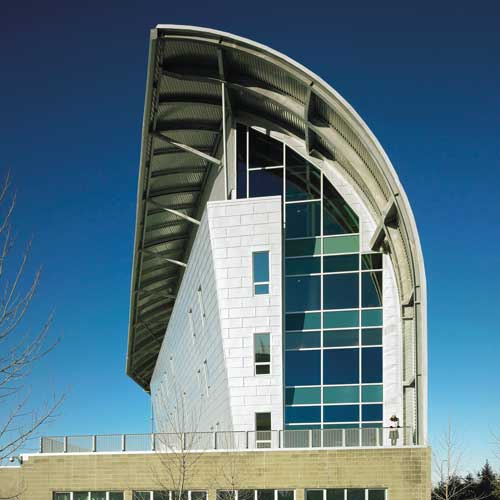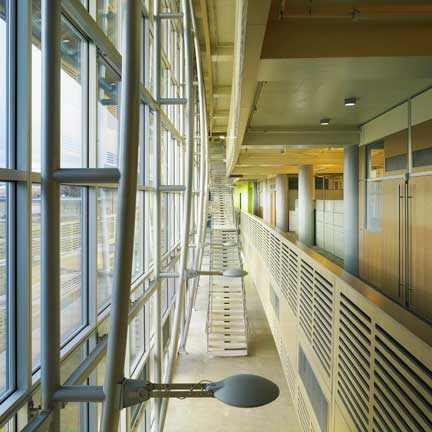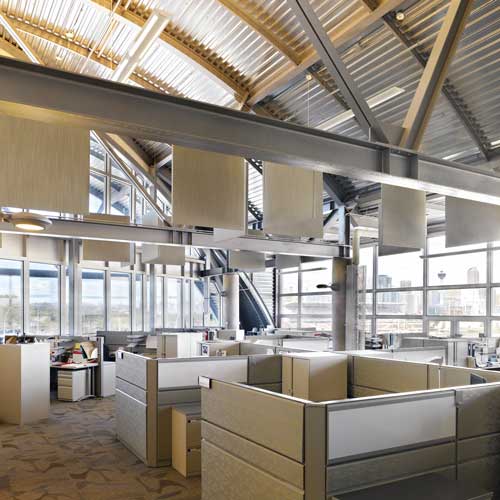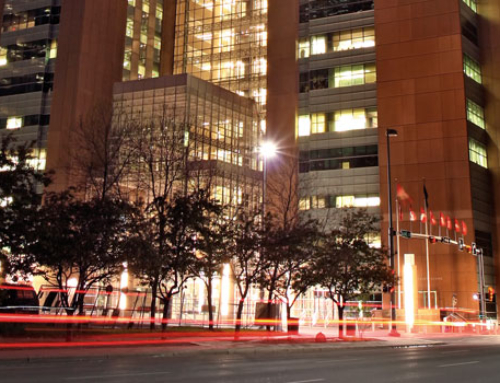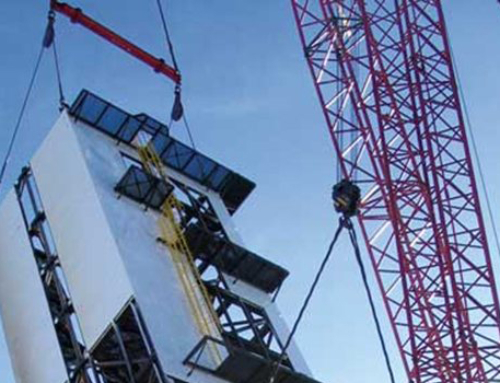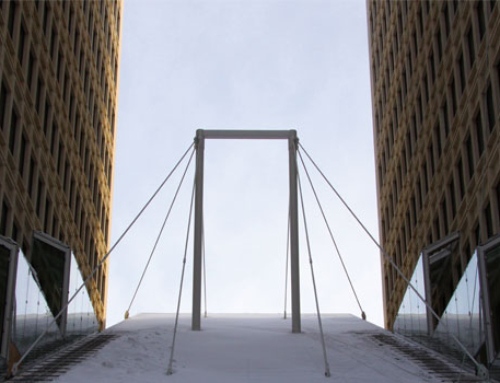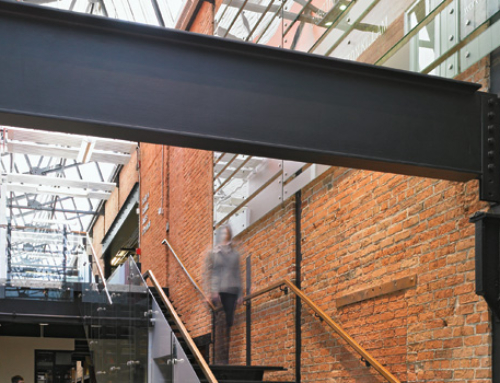Project Description
Nothing says “water” quite like the City of Calgary’s distinctive new Water Centre. Viewed from the south, the curving steel roof pours over the building’s shimmering four-storey green/blue curtain wall like a giant cresting wave.
While the design of the building makes a dramatic architectural statement in steel, that’s only half the story. The Water Centre is also the first and largest civic office building to exceed Calgary’s minimum LEED Silver standard. The building provides the City’s Water Resources and Water Services division’s approximately 775 professional staff and field personnel with open office stations, meeting and quiet rooms, conference facilities and crew changing areas.
“When we first dreamed of this building, we were two separate divisions,” says Paul Fesko, Manager, Strategic Services, City of Calgary. “During the functional design we merged and the building was designed around how we wanted to work together.”
Architect Jeremy Sturgess says the low-rise design was chosen to promote communication. “We wanted to encourage interaction and felt a high rise was not the way to go.” The result is a long, narrow steel clad building 160 metres long by 20 metres wide, with open office spaces along the north side and meeting rooms along a middle corridor overlooking a four-storey atrium along the south side – all bathed in natural light.
Steel was used extensively throughout the interior and exterior of the building due to its reflective nature, Sturgess says. “I wanted the whole structure to appear light and steel allowed us to do that.”
The most notable use of steel was to clad the unique five storey curved envelope that starts on the north façade, arches over the building and concludes as an overhang protecting the four-storey curtain wall on the south side. “We wanted to maximize the amount of sunlight coming in but needed to temper it so the sun is never a source of irritation to the work spaces,” Sturgess says. “The curved steel roof acts as a blanket protecting the building from the north wind and sheltering the south side like a visor.”
The underside of the steel arch is exposed on the interior, giving the impression of a loft on the top floor, Sturgess says. “We set out to create beauty from the structural materials. All the elements are finely crafted, and we used the best quality materials so we could leave them raw. Basically there’s no ‘fluff’ in the building, because there was no need to hide or cover the structural materials.”
Fesko says the building reflects his department’s water management values. “We’re quite well served by the building. We’re a LEED Gold facility and we may actually end up with a LEED Platinum rating.”
All 700,000 kilograms of reinforcing steel used in construction of the building came from recycled sources, and 95 per cent of excess construction material was recycled. With 95 per cent natural lighting, the Water Centre will save an estimated 1,250,000 kilowatt hours per year on lighting – or over 1,100 tons of greenhouse gas emissions.
“We’ve built a highly sustainable building for a basic building budget and we’re really proud of that,” Sturgess says.

